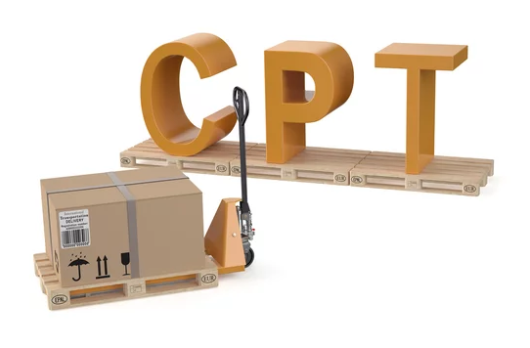Here’s a detailed explanation of CPT (Carriage Paid To):

1. Seller's Responsibilities
In CPT, the seller has several key obligations:
Freight Costs: The seller is responsible for arranging and paying for the carriage of goods to the agreed destination, which could be a port, warehouse, or another location specified in the contract.
Handing Over to the Carrier: The seller must deliver the goods to the first carrier, chosen either by the seller or by the buyer, depending on the agreement. Once the goods are handed over to the carrier, the risk of damage or loss shifts to the buyer, even though the seller still bears the freight costs.
Export Customs Clearance: The seller is responsible for handling export clearance procedures, including submitting necessary documentation and paying export duties or fees, if applicable.
Transport Documents: The seller must provide the buyer with the necessary documents, such as the commercial invoice, proof of delivery, and any other required documents to enable the buyer to claim the goods at the destination.
2. Buyer’s Responsibilities
In CPT, the buyer takes on the following responsibilities:
Risk after Delivery to the Carrier: Once the seller delivers the goods to the first carrier, the buyer assumes all risks. This means that any loss, theft, or damage that occurs during transport is the buyer's responsibility, even though the seller is still paying for the freight.
Import Customs Clearance: The buyer is responsible for handling import customs procedures at the destination country. This includes paying duties, taxes, and complying with local regulations.
Insurance (Optional): Although CPT does not obligate either party to provide insurance, it is generally advisable for the buyer to arrange insurance coverage for the goods after the risk passes to them, ensuring protection during transit.
3. Point of Delivery and Transfer of Risk
a. Handing Over to the First Carrier
Under CPT, the seller completes their obligation once the goods are handed over to the first carrier. At that point, even though the seller is responsible for freight costs, the buyer bears the risk of any potential damage or loss. This is one of the critical distinctions of the CPT term.
b. Destination for Freight Costs
The agreed-upon destination is the point where the seller's responsibility for transport costs ends. The seller must cover all costs related to moving the goods to this point, but the risk for the goods transfers much earlier—once the first carrier takes possession of them.
4. Comparison with Other Incoterms
CPT vs. CIF (Cost, Insurance, and Freight):
In CIF, the seller is required to not only pay for the freight but also provide insurance for the goods until they arrive at the destination port. In CPT, however, the seller is not obligated to provide insurance, and the risk transfers to the buyer once the goods are handed to the carrier.
CPT vs. FOB (Free on Board):
FOB is generally used for maritime shipping, where the seller delivers the goods onto a ship, and the risk transfers once the goods are on board. CPT is more flexible and can be applied to all modes of transport, and the risk passes when the goods are handed to the first carrier, not necessarily a ship.
CPT vs. CIP (Carriage and Insurance Paid To):
CIP is similar to CPT in terms of the seller's responsibility for transportation costs, but in CIP, the seller must also arrange insurance for the buyer's benefit. In CPT, the seller only needs to arrange transportation.

5. Insurance under CPT
There is no obligation under CPT for the seller to arrange insurance for the goods during transit. Since the risk of loss or damage transfers to the buyer once the goods are handed to the carrier, the buyer is advised to secure insurance for the duration of the journey to protect their interests.
6. Real-World Example of CPT
Suppose a company in Germany purchases machinery from a supplier in Japan under CPT terms, with the destination being a warehouse in Berlin. The Japanese supplier will arrange and pay for the transportation to Berlin. However, once the machinery is handed over to the first carrier in Japan (such as a shipping company), the German buyer bears the risk of any damage or loss during transit. The supplier will continue to cover the transportation costs until the goods reach Berlin.
If the buyer wants to protect the machinery while in transit, they should purchase insurance, as the seller is not obligated to provide it under CPT.
7. Advantages of CPT
Simplified Transportation: The seller arranges and pays for the transportation, making it easier for the buyer, who doesn’t need to handle the logistics.
Clear Risk Transfer: The moment of risk transfer is clearly defined—the buyer assumes the risk as soon as the goods are handed over to the first carrier.
Applicable to Multiple Transport Modes: CPT can be used for air, land, sea, or multimodal transport, offering flexibility in international trade.
Conclusion
CPT (Carriage Paid To) is a flexible Incoterm that allows the seller to handle the logistics and costs of transportation, while the buyer assumes the risk once the goods are handed over to the carrier. This term works well for businesses involved in international transactions, where the seller is responsible for arranging shipment, but the buyer takes on the risk after the goods leave the seller's possession. Buyers should consider insurance to mitigate the risks involved during transit.